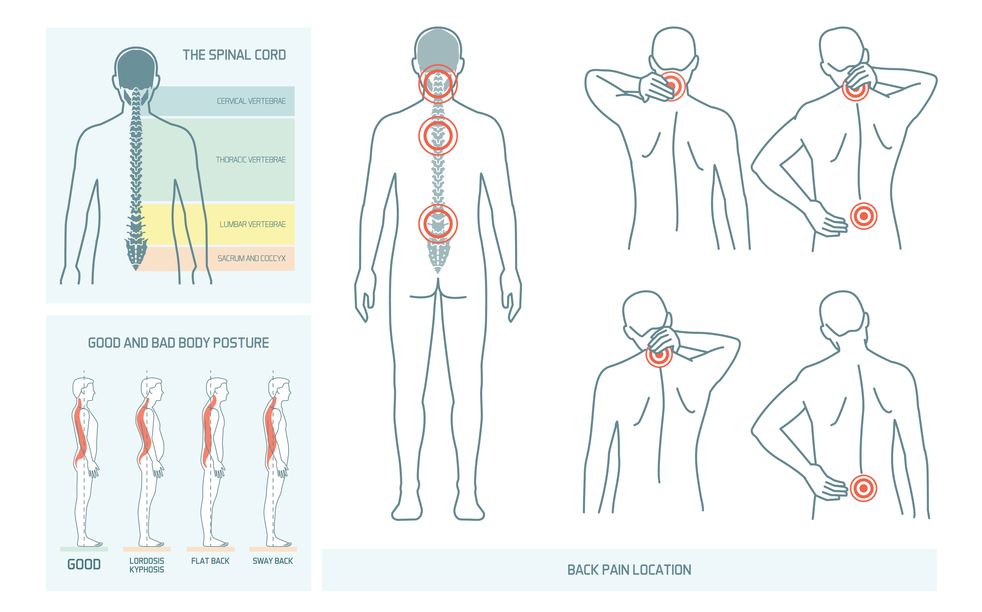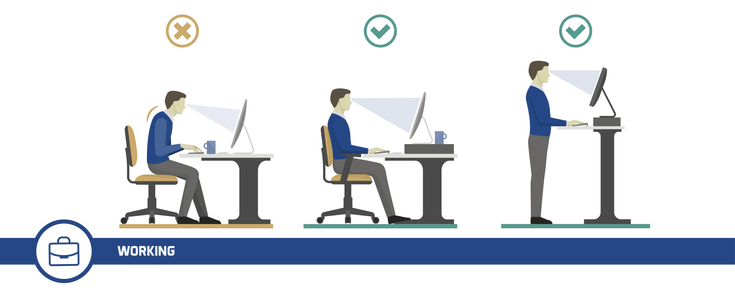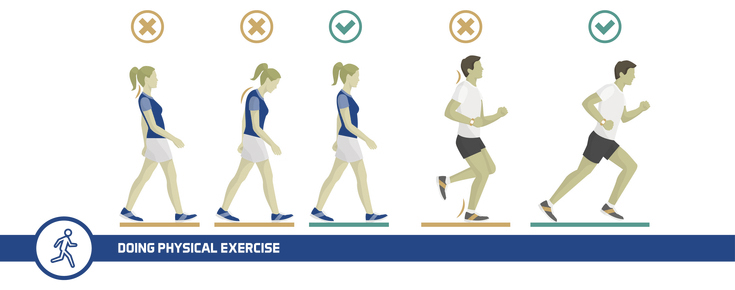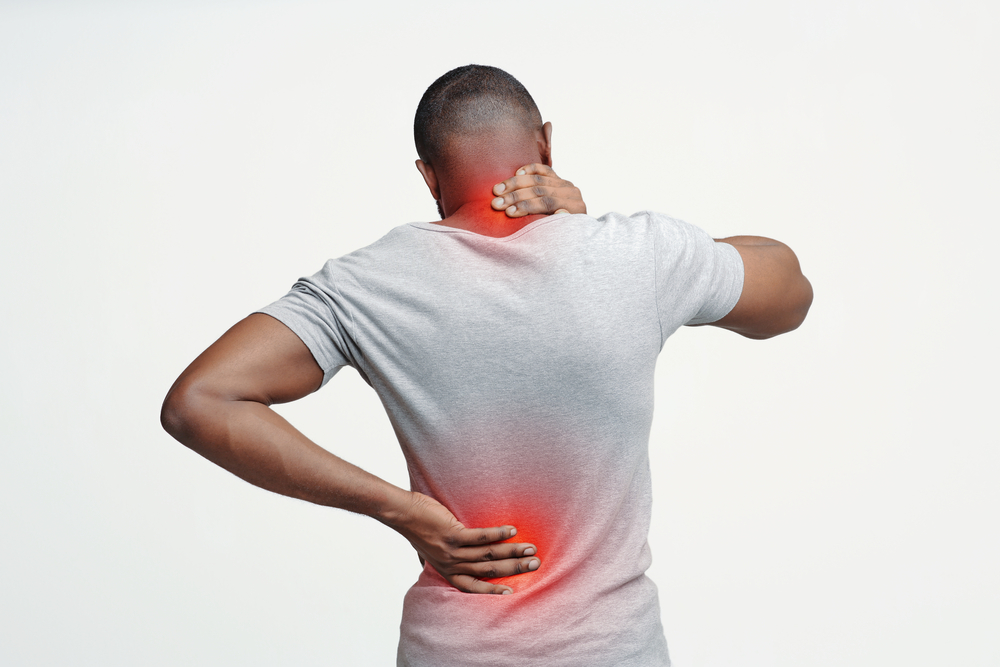During your daily routine, you may begin to notice acute back or neck pain. Is this just a reality you have to accept, or is there something you can do about back and neck pain?
Neck and back pain are certainly common symptoms and pervasive. In 2018 alone, 18% of Americans visited their doctor concerning lower back pain and 14% to prevent neck pain. This pain can range from shooting pain that occurs regularly to pain numbness. You may have a decreased range of motion in your neck or back due to chronic pain.
But no matter how intense the pain is or why it’s happening, medical solutions can help.
This post will explore the top ways you can prevent neck and back pain from becoming part of your daily routine and minimize the common symptoms. These are tips that can fit just about any lifestyle. Whether it’s as simple as changing up your sleeping position or including more movement and a better diet into your daily routine, you can find a solution that works below.
Why You Experience Back and Neck Pain
Before we jump into preventing back and neck pain, it’s important to understand why you have this chronic pain. Though back and neck pain are common symptoms for people of all ages, there is often an underlying reason.
Once you know what may be causing your back and neck pain, you can more easily find the best solutions and preventative measures for your body. Here are some potential causes of your back and neck aches.
Facet Joints
Your spinal cord is made up of vertebrae that allow for a range of motion in your back and neck. Your facet joints are the point at which movement occurs. So every time you move your neck and back, thank your facet joints.
As we get older, you may experience osteoarthritis in your facet joints. This can also happen if your facet joints experience pressure or trauma.
Osteoarthritis of the facet joints will cause cervical spine pain and neck pain depending on the area most affected. Here are common symptoms of pain that occurs due to osteoarthritis of the facet joints:
- Pain that occurs is most often on one side but can be both
- Often isolated to a specific joint
- Pain that occurs increases (potentially shooting pain) when bending to one side or lying on your side.
Herniated Disc
Discs are the pieces that sit between vertebrae so that they don’t touch. They act as a cushion for the vertebrae as they perform their range of motion. So when a disc protrudes and can’t fully absorb the shock of the spinal cord, this is a slipped or herniated disc.
The common symptoms of chronic pain caused by a herniated disc:
- Pain that occurs is localized to the midline
- Pain that reaches both sides of the back and down towards the buttock or even legs
- Sharp pain when bending forward, lifting, or sitting for long periods
Spinal Stenosis
Spinal stenosis refers to when your spinal cord actually begins narrowing. This typically occurs in people over the age of 60. The pain is caused by damage to your spinal nerves and will affect your range of motion.
These are the common symptoms of spinal stenosis:
- Legs, calves, or buttocks may experience pain, weakness, or numbness
- Calves may have some cramping when walking
- Shooting pain in one or both legs
- Relief when bending forward, sitting, or lying down

Muscle Strain
Acute back or neck pain may not always be a chronic pain disease or injury. It may simply be a short-term, soft tissue injury that needs to be treated.
Muscle strain, also known as a pulled muscle, is when your muscle stretches too far and affects the soft tissues. Muscle strain can occur almost anywhere in the body, including the back and neck muscles.
Here are the common symptoms to look out for if you think you have a muscle strain:
- Muscle pain or tenderness
- Limited motion
- Muscle spasms
- Muscle weakness
- Swelling
- Soft tissue pains
Bone Spurs
Bone spurs, also known as osteophytes, are bony lumps that form on your bones due to osteoarthritis. They will usually grow around your spinal cord and joints, making your neck and back prime targets of bone spurs.
Bone spurs will not always cause pain. It will depend on the person and the severity of the injury. However, bone spurs can cause the following:
- Severe pains
- Stiffness
- Pain numbness
Seeking Medical Advice
While these are the most common causes of back and neck pain, this is by no means an exhaustive list.
If you are experiencing acute back or neck pain that causes such severe chronic pain that interferes with your daily routine and life, it may be time to seek medical advice to determine the exact cause of your common symptoms.
Tips to Prevent Neck and Back Pain
If you regularly experience back or neck pain during your daily routine, and you are looking for a way to prevent this, we have some top tips for you.
Not all of these tips will be the right fit for you, depending on your lifestyle and injury. So if you are unsure about one of these, feel free to contact your doctor or physical therapist for help.
Tip #1: Avoid Sitting for a Long Period
Ask any physical therapist for medical advice, and they will tell you that movement is the key to health. So it’s probably no surprise that sitting for long periods can actually cause your acute back or neck pain.
If you have a job that often includes sitting for a long period as part of your daily routine, you may have noticed pain and stiffness at the end of the day. But you don’t have to accept this chronic pain.
Avoid sitting for a long period by getting up and walking or performing light stretching exercises regularly. Start with every hour and increase or decrease frequency as needed.
You’ll also want to ensure you have good posture. When you have good posture, you are properly supporting your back and neck. You can also invest in chairs designed to help with good posture and relieve back and neck pain. So, invest in yourself and prevent chronic pain by moving regularly, using good posture, and getting the right chair.
Tip #2: Relieve Pressure on Lower Back While Standing
Good posture doesn’t just count for sitting. You’ll want to have good posture when standing as well. And the best way to support your lower back with good posture is to also take the pressure off of your back.
That’s right; just by simply propping your foot up, you can take pressure off of your lower back. So if your daily routine often involves standing for a long period, then try standing with one foot on a block, a stack of books, a box, or just about anything.
You can also perform stretching exercises regularly when standing. Bend over toward your toes, or try stretching exercises from side to side.
Neither of these stretching exercises requires elaborate poses or would interfere with your daily routine. But adding a little more range of motion to your standing will relieve the pressure on your cervical spine.

Tip #3: Find the Right Sleeping Position
You probably spend at least 25% of each day sleeping. Sleep is essential to give your body the time and rest to heal after a long day, so make sure that you’re not actually doing any further damage to your body while it’s trying to recover.
Certain sleeping positions are simply not right for people with chronic pain in their back or regular neck pain. If you are looking to prevent neck pain and back pain, you need to be sleeping correctly. Just as sitting and standing require good posture, you need good sleeping posture.
This really comes down to supporting your back and neck muscles as you sleep. You can improve many sleeping positions by using a small pillow. You can support your back and neck muscles by placing a small pillow to prop up your legs or under your back.
The two best positions for sleeping are on your back or to lie on your side. The worst is lying on your stomach. If you lie on your side, place a small pillow under your knees to help with alignment. You can also do this if you lie on your back. This way, your back is completed supported by the bend without arching.
So if you have chronic pain, try using a good posture when you sleep. Whether you lie on your side or your back, you can use a small pillow to prevent neck pain occurs as you sleep.
Tip #4: Invest in the Right Mattress
While we’re on the topic of sleep, you don’t need to just rely on a small pillow and try to lie on your side ever so perfectly. You can also get the right mattress so that you have complete support.
An old, worn-out mattress is not going to support your back and neck muscles. The classic box-spring doesn’t mold to the shape of your body, creating a surface that can lead to muscle strain and acute back or neck pain. So make sure your back, head, and neck are protected with firmer mattresses.
Tip #5: Prevent Pain on Plane Rides
We’ve recommended avoiding a long period of sitting and standing properly with good posture. But what do you do when you are all set to jet off on an adventure?
With a third of Americans saying they do long-haul flights for leisure, you don’t want to sacrifice experiences because of chronic pain. So, how do you make sure that you won’t suffer from acute back or neck aches before your vacation even begins? When you have such little legroom, is it even possible to sit comfortably?
Not really. That’s why we recommend looking for opportunities to get out of your seat whenever you fly. This could be walking the length of the plane to the furthest bathroom. Take a moment to touch your toes or do some twists.
When you are at your seat, use something as support for your feet. By supporting your feet, you are less likely to overarch your back or slouch. This takes the pressure off your lumbar and cervical spine and means you can support your back throughout the flight.
Regularly do neck stretching exercises and movements to prevent neck pain as well.
Tip #6: Make Your Vehicle More Comfortable
If driving is part of your daily routine, you can’t discount what a car can do to you that causes back and neck pain.
When looking for a new ride, we have some tips that you should consider if you have chronic pain in your back, head, and neck:
- Make sure you get an automatic transmission. This is often the standard nowadays. But it’s worth saying that by avoiding extra footwork on the pedals, you may be able to prevent neck and back pain.
- Ensure that your power steering works well. This will mean it’s even easier for you to turn the wheel, requiring less muscle strain and reduce tension in your head and neck as well as your shoulders and back.
- Supportive car seat. Your car seat should support your lumbar and cervical spine. Just like a firm mattress, make sure this seat will support you, no matter how long the drive.
As we’ve mentioned, movement is key to easing acute back and neck pain. So while getting the right car will help, extensive drives are not ideal for those with chronic pain.
If you’re looking ahead to a long drive, or you drive long distances during your daily routine, make extra time for an extended trip filled with breaks. Pull over for some occasional stretching exercises and time to stand. Your body will thank you for the breaks!
Tip #7: Change How You Do Chores
We all love a clean house. So what do you do when working for a clean house means you experience acute back and neck pain?
There are some things you can do to help yourself. Avoid moving large objects, and make sure you lift things correctly. This could mean leaving objects you use for chores in a more accessible place. If bending over is a problem, place things higher. Leave things at eye level when possible.
You will also want to avoid physically demanding tasks, which will vary based on your level of chronic pain. This could mean not storing items in the attic or paying for the car wash instead of doing it yourself. You may want to hire professionals to help with these chores or ask a friend to come over and lend a hand.
Taking care of yourself and your health is far more important than a spotless house. So do whatever you can do safely. Anything that causes too much pain should be left to either helpful family members or possibly a paid cleaner.
Tip #8: Get Exercise Time in
Movement, movement, movement! It can be the fountain of youth for those who take advantage. Light exercise or physical therapy can greatly help with pain management.
When your neck or back is in pain, the last thing you may want to do is exercise. But that is exactly what you should do.
If this seems overwhelming, or you’re unsure where to start, meeting with a professional in physical therapy can help. They can help you perform the necessary exercises to relieve your pain and give you long-term treatment and relief.

Tip #9: Consider Losing Weight
Weight loss doesn’t have to be for aesthetic purposes. But when your body has less weight to support, you relieve the pressure and muscle strain you put on your body. This is where weight loss can help.
You may experience some weight loss naturally as you begin to move and exercise more. But by making some small adjustments to your diet, you can experience a moderate weight loss that can be very impactful for your chronic pain.
Conclusion — Preventing Pain in Your Daily Routine
Whether you have pain related to soft tissues or spinal stenosis, chronic back and neck pain interferes with your life and becomes all-encompassing.
The good news is that you can make a big difference in your pain management and ease your common symptoms just by making some changes to your daily routine. Performing movement and stretching exercises work best and bring benefits to your entire body. But you can also change your sleeping positions, posture, diet, and mattress to save yourself from severe chronic pain.
If you try all of these and your chronic pain is still so severe that it interferes with your daily routine, it may be time to seek medical advice or pursue physical therapy to relieve your symptoms.
We recommend scheduling a visit with your doctor to discuss actionable ways to decrease painful symptoms of neck and back issues. However, these tips should definitely make a difference in the meantime.
Get in touch with us to learn more about what a Return to Work Program can do for you.
